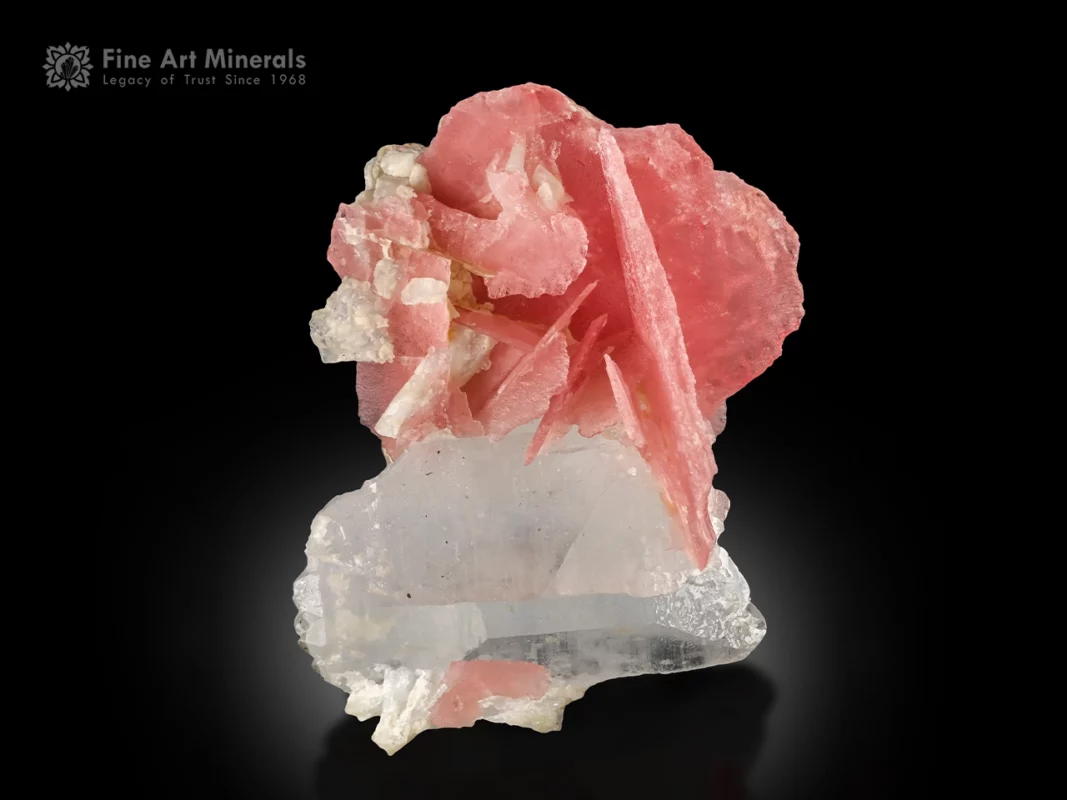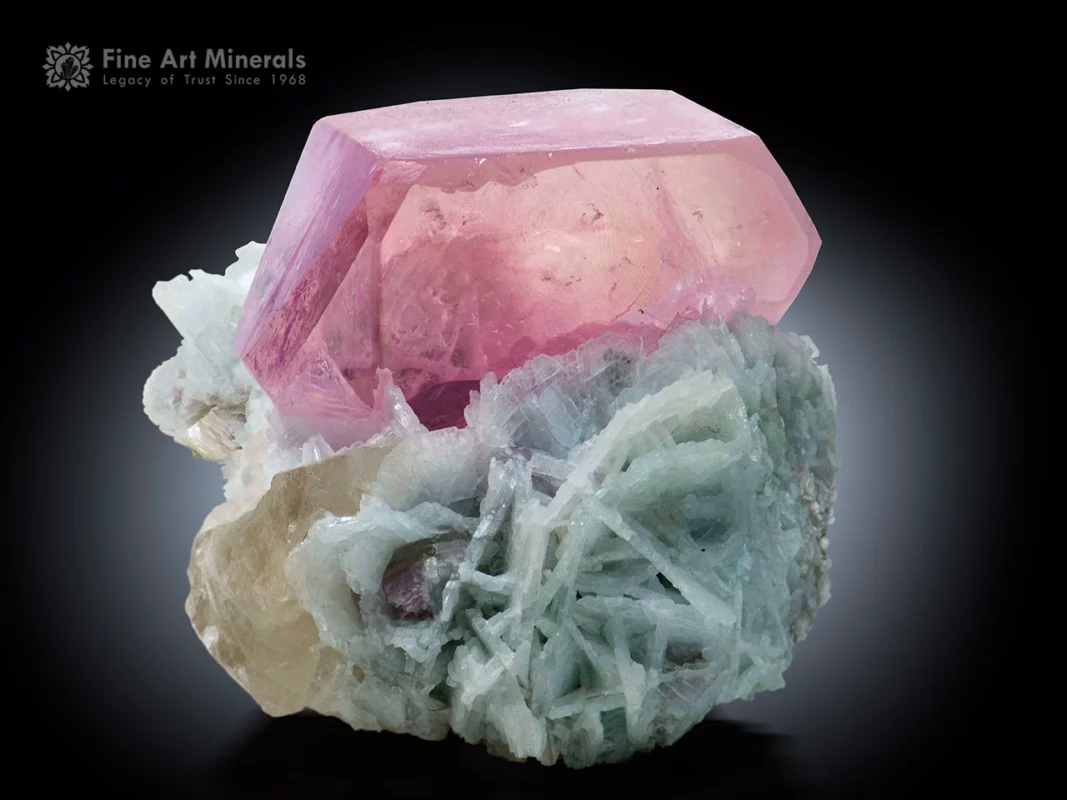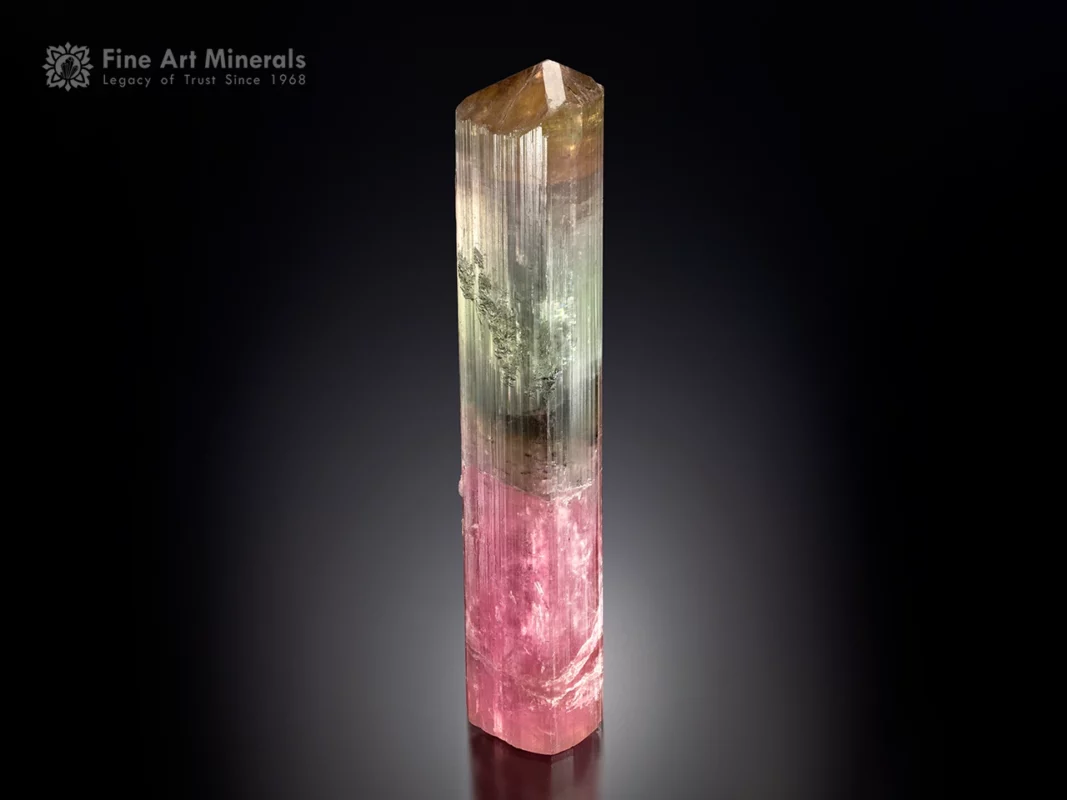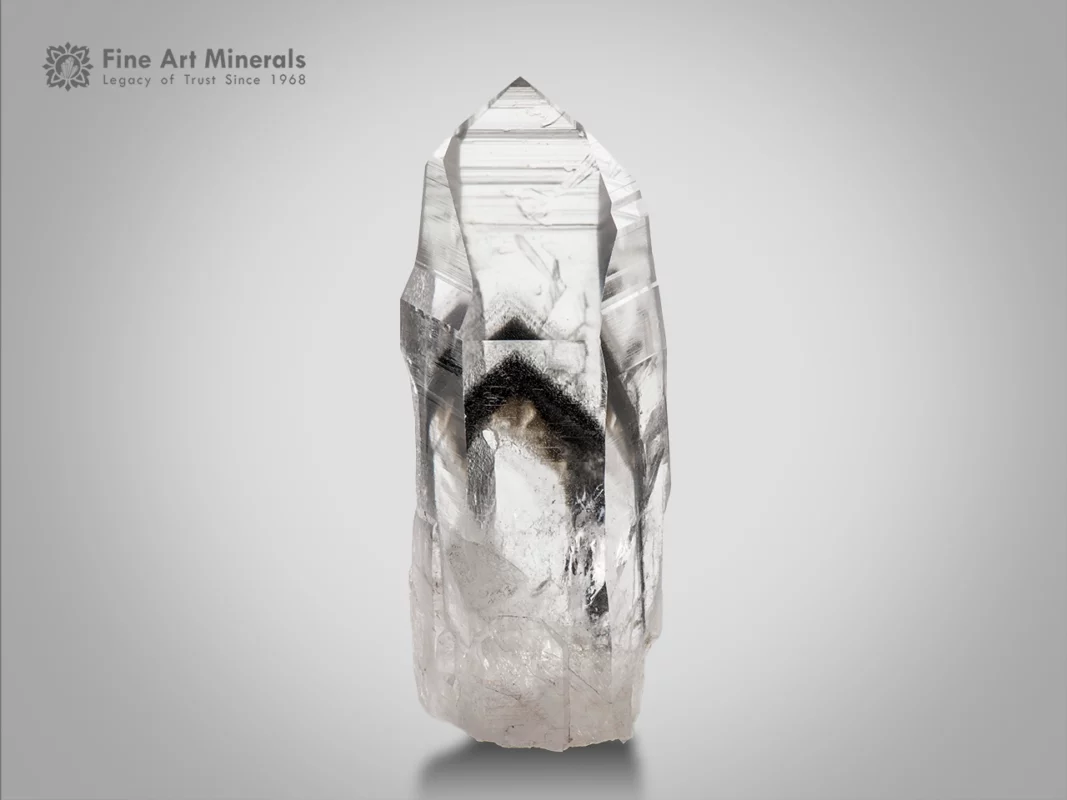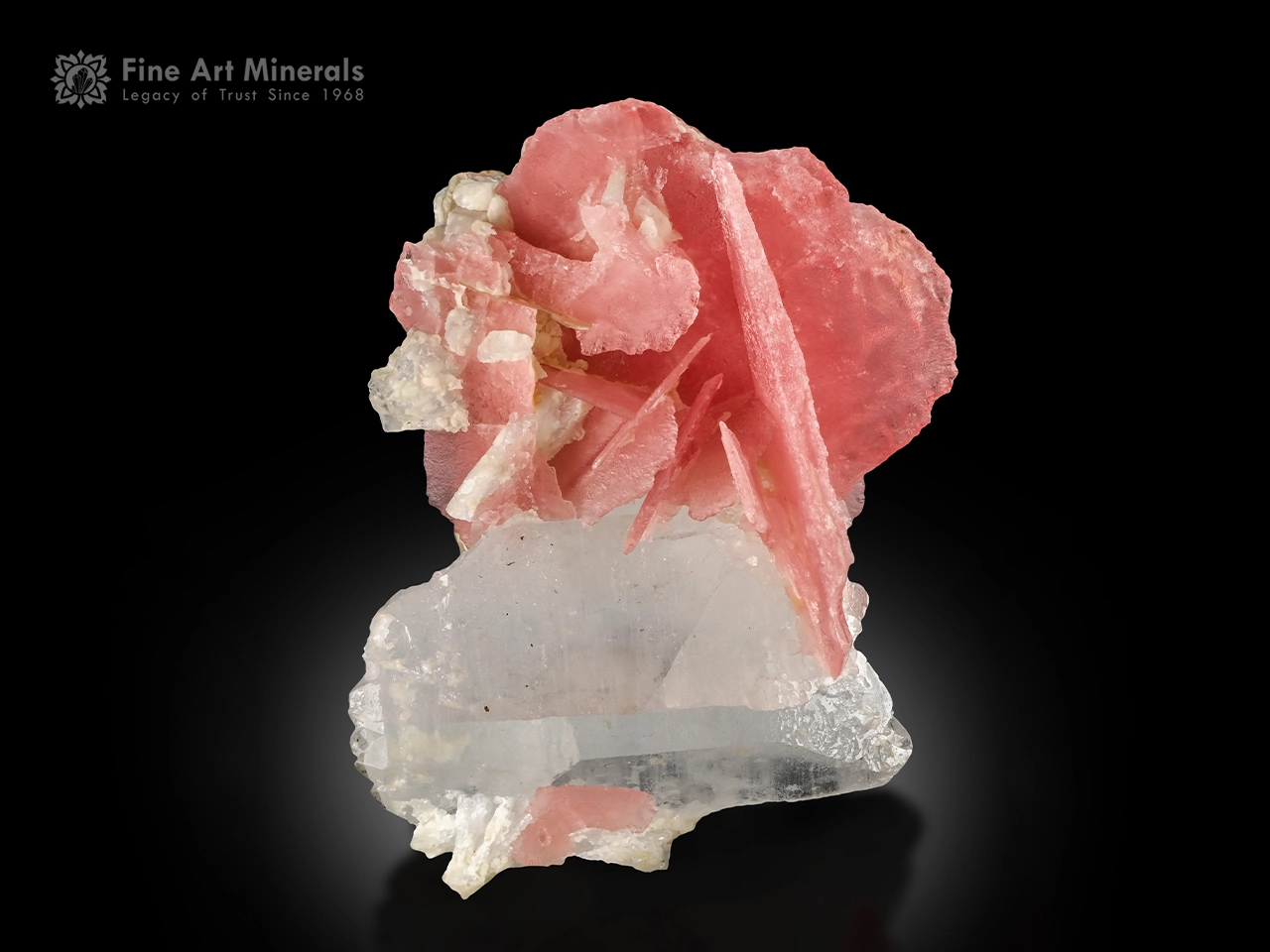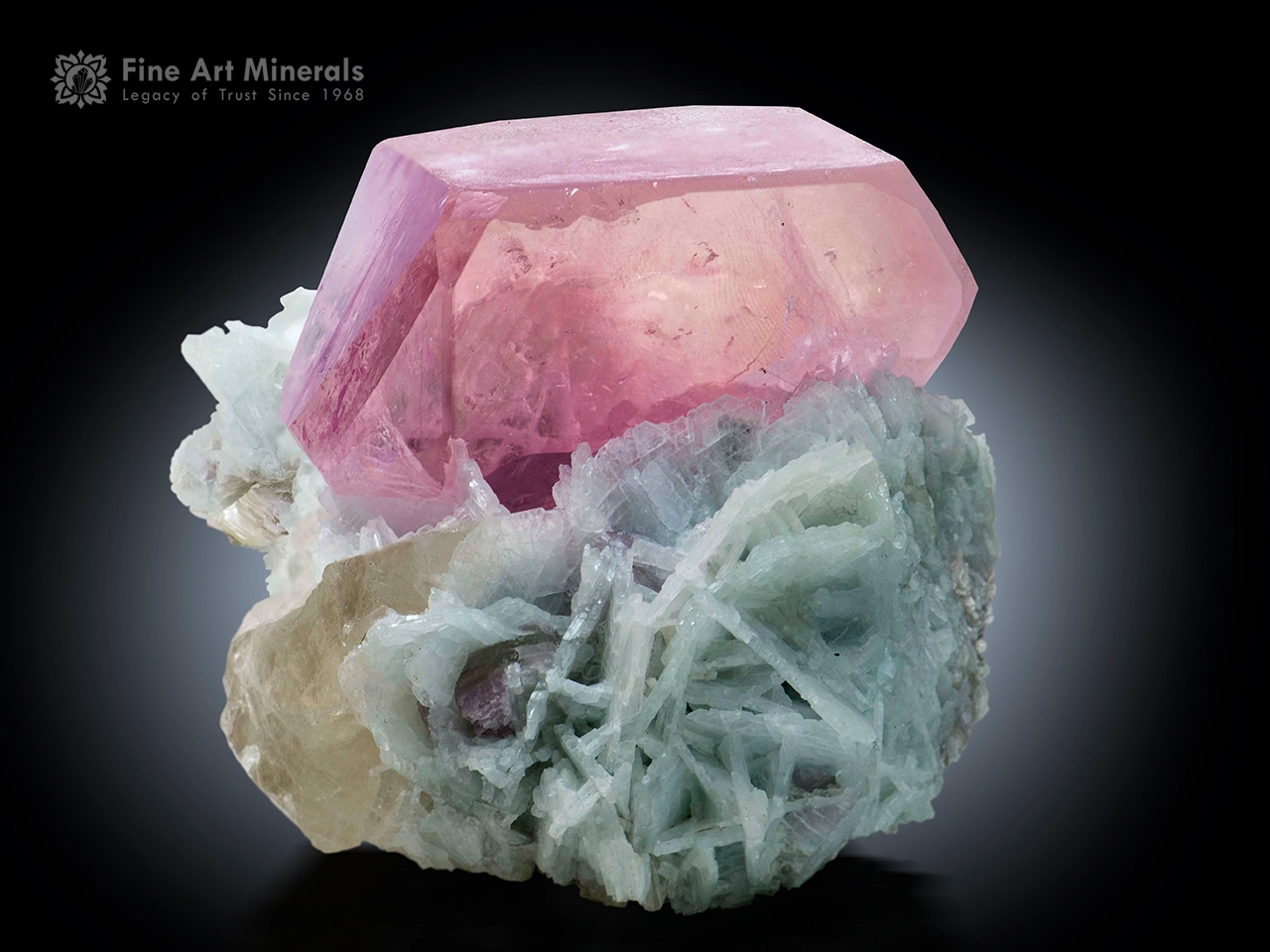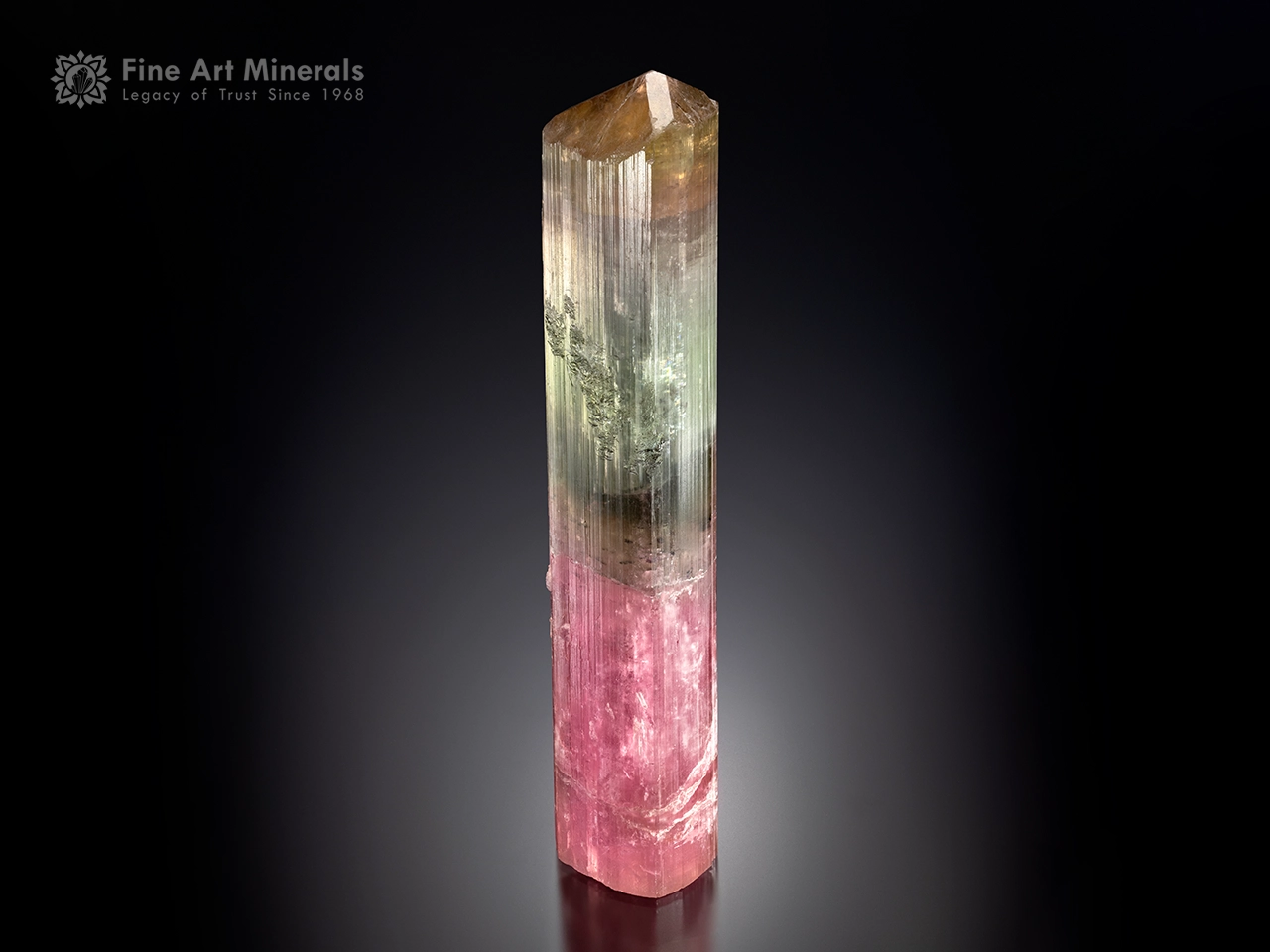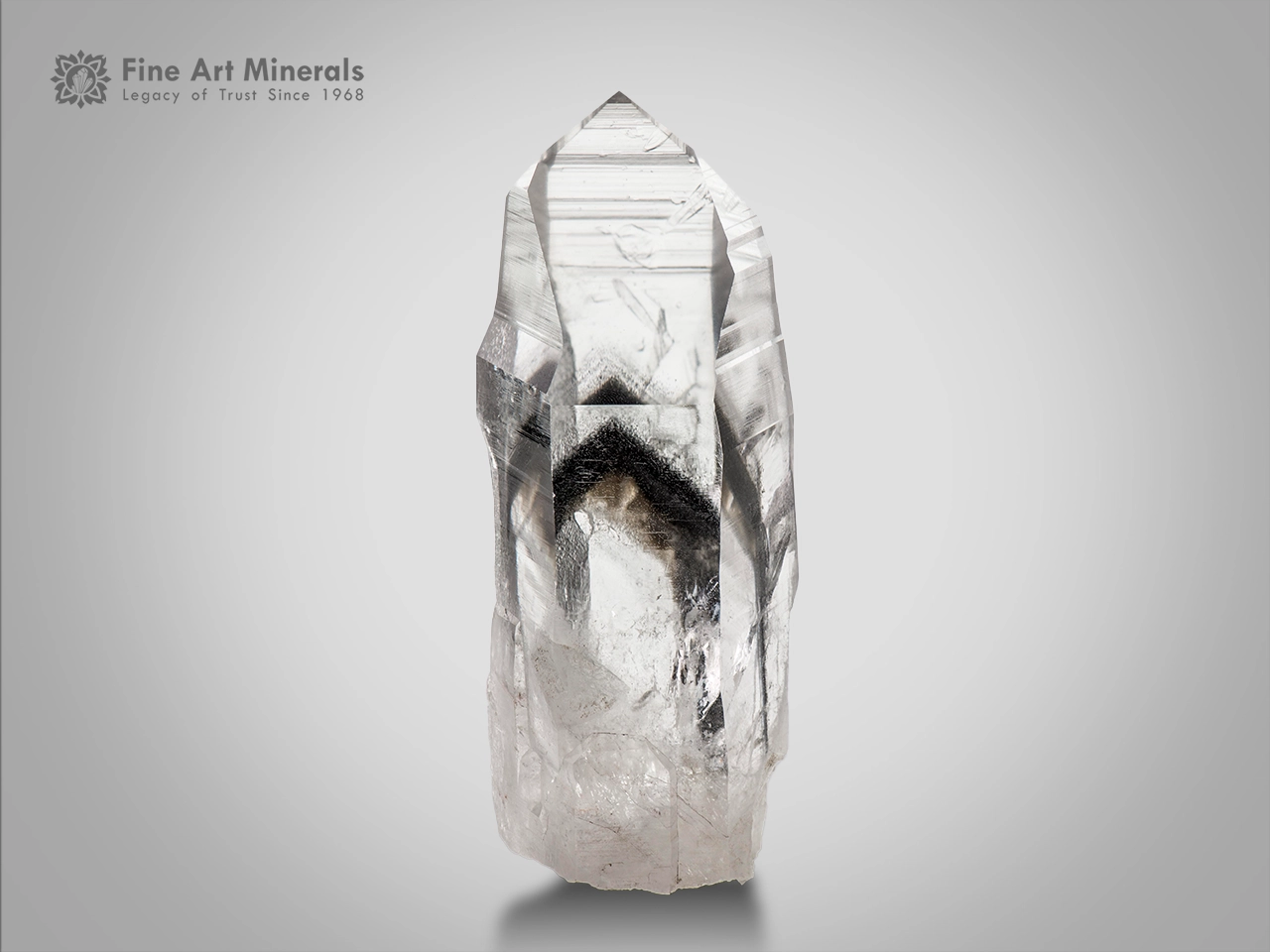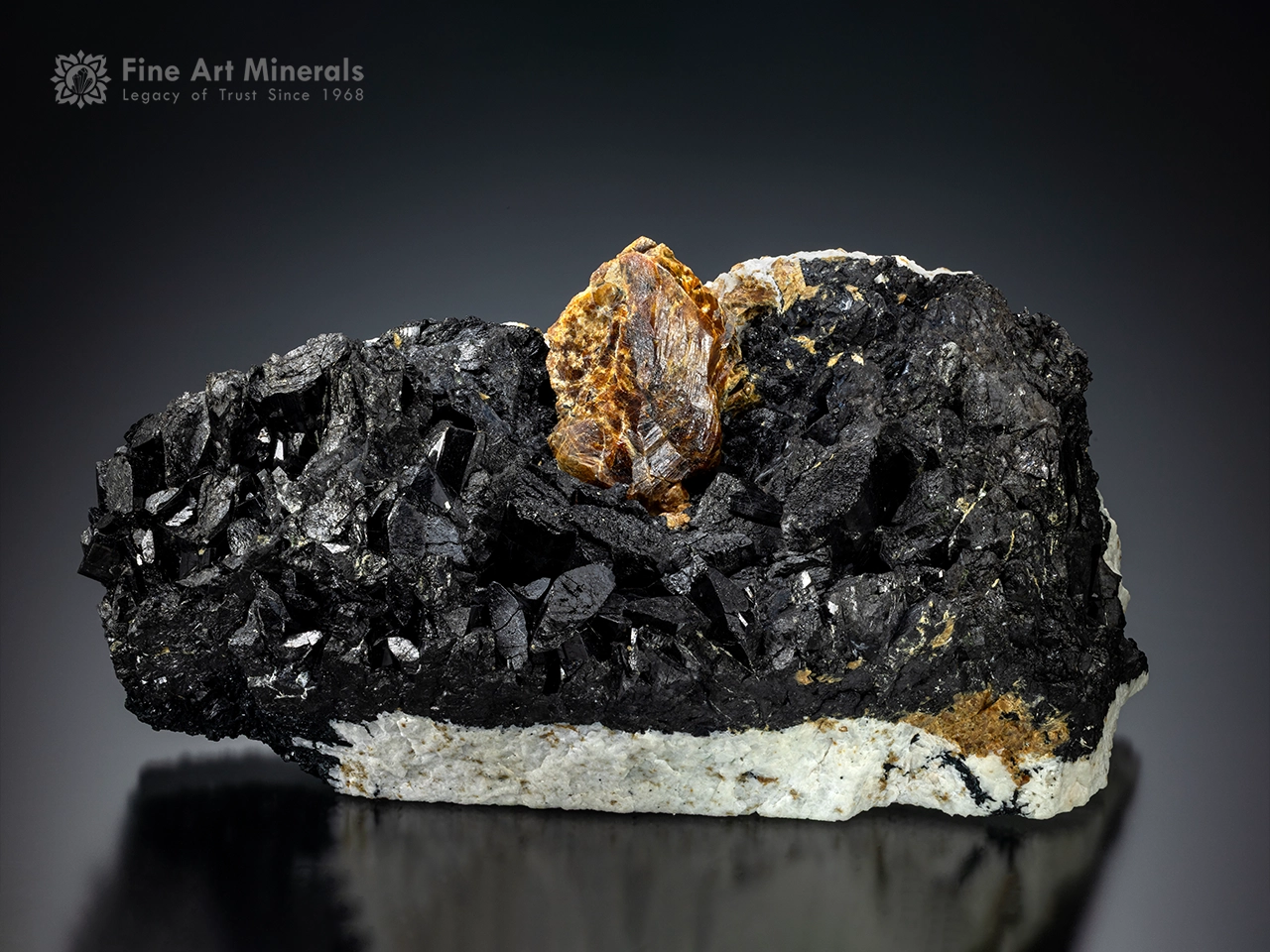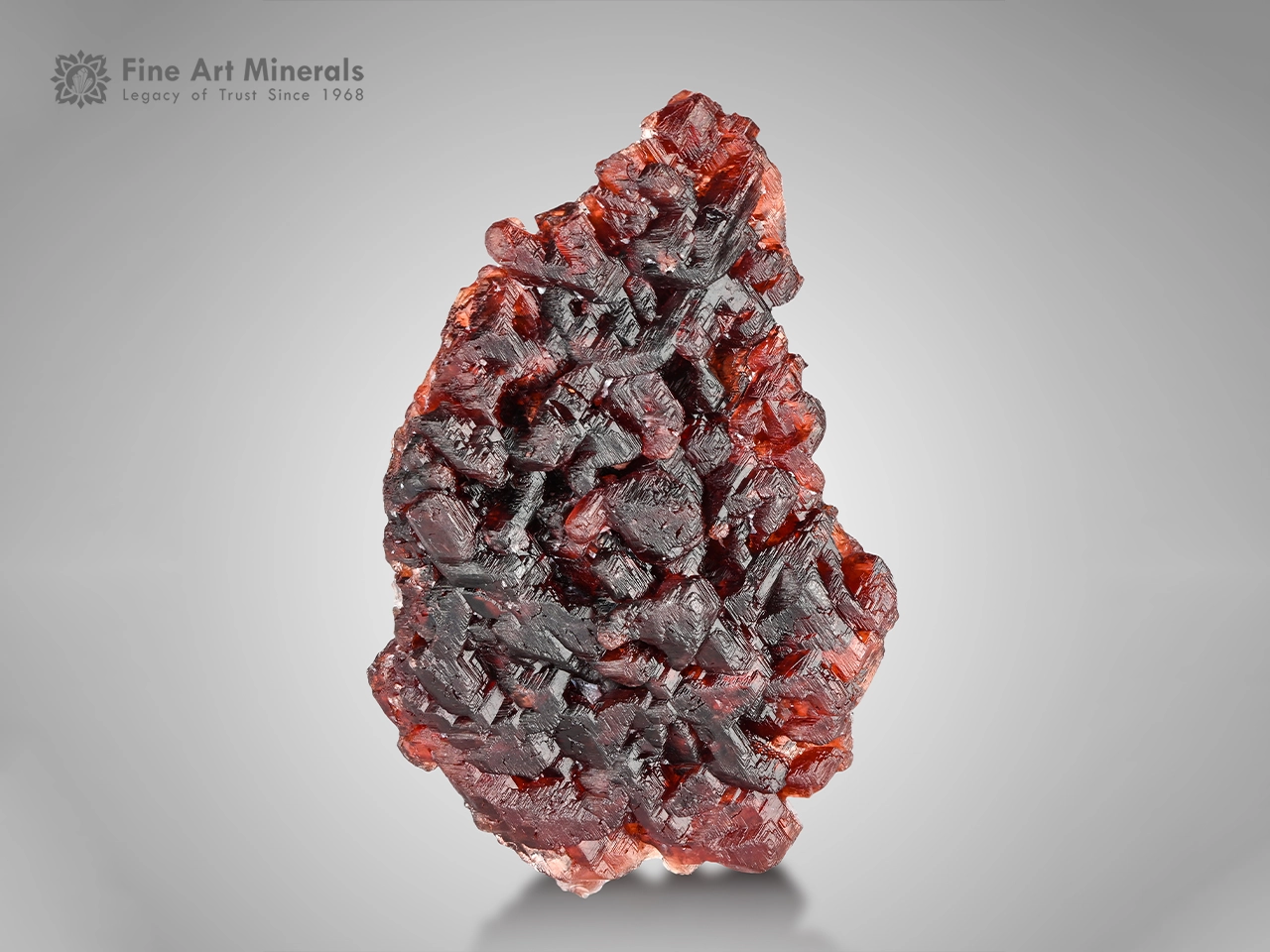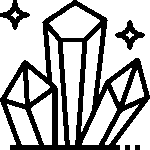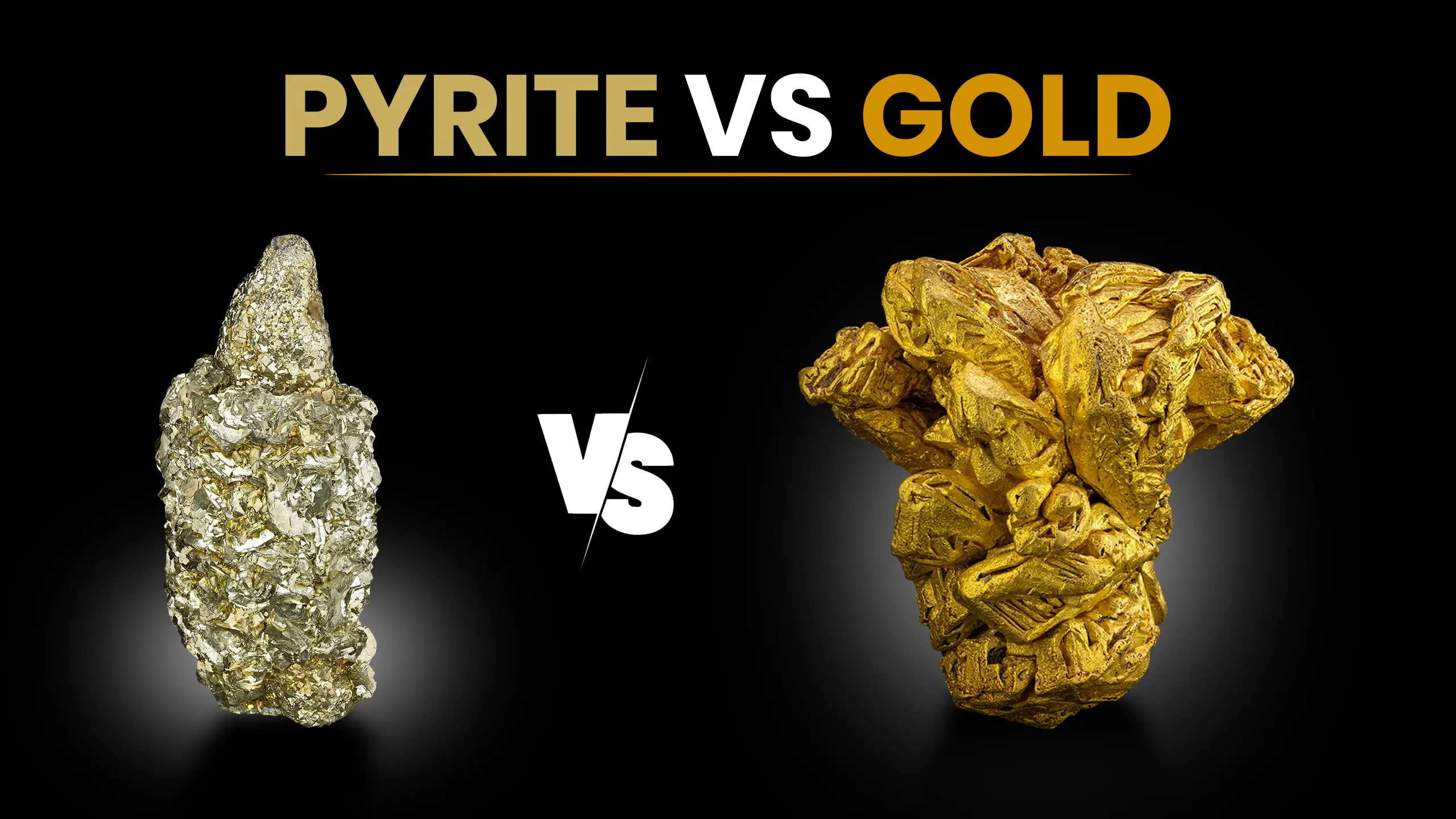
A Comprehensive Guide to Beryl and Its Varieties

Table of Contents
ToggleWhat Exactly is Beryl?
Beryl is a single mineral species with many faces. Chemically, it is Be₃Al₂Si₆O₁₈, a beryllium aluminum cyclosilicate.
In hand, it most often appears as a six-sided prism with a glassy surface and crisp terminations. Sometimes it is clear. Other times it carries blue, pink, yellow, or green.
Those shifts do not mean a new species. They are the same framework responding to tiny changes in chemistry during growth, which is why beryl feels like a family rather than a single look.
Beryl Varieties:
Here are a couple of beryl varieties:
1. Aquamarine:
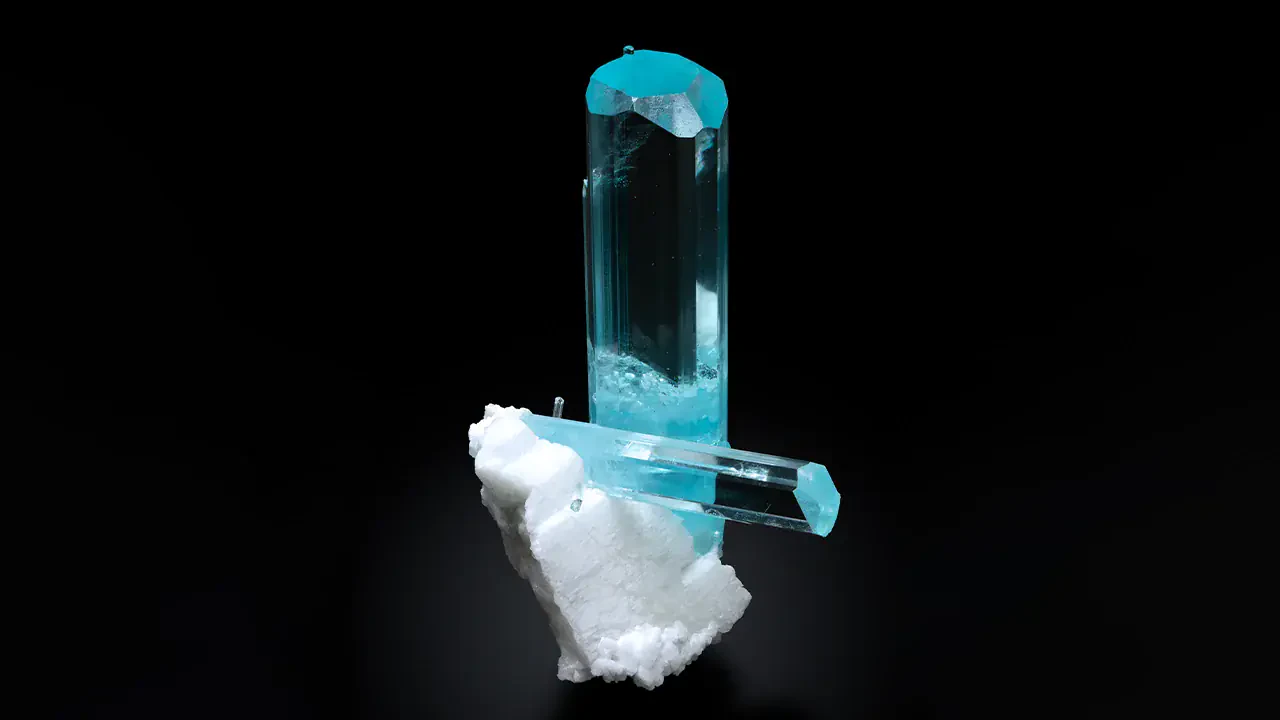
Blue beryl is colored mainly by Fe²⁺, sometimes with a gentle greenish push from Fe³⁺. It typically forms long, glassy hexagonal prisms with sharp terminations and clean faces, often on feldspar and quartz. Fluid inclusions and mica flakes are common and can add character without spoiling transparency.
2. Emerald:
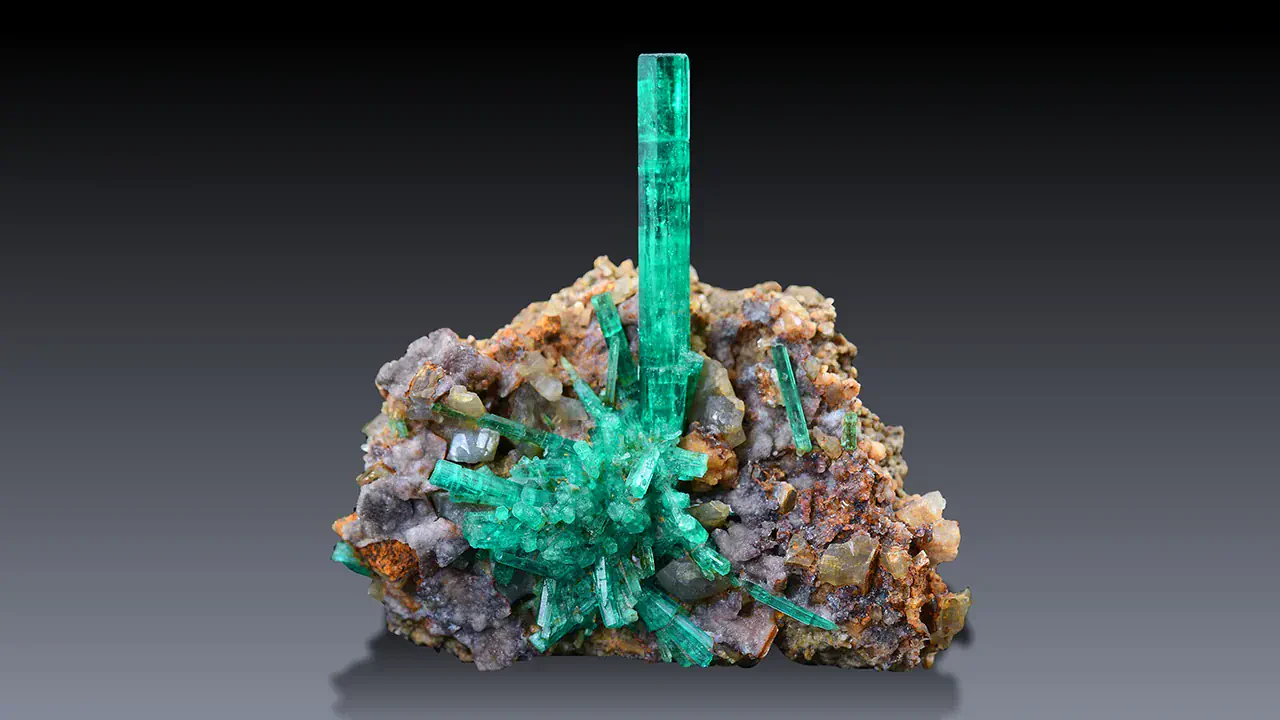
Green beryl colored by Cr³⁺ and/or V³⁺, famous for rich saturation and its “jardin” of natural inclusions. It often grows in fracture-rich environments where hydrothermal fluids meet Cr/V-bearing rocks, which explains its cracks and healed veins. Color, internal texture, and locality signatures matter more than sheer size.
3. Morganite:
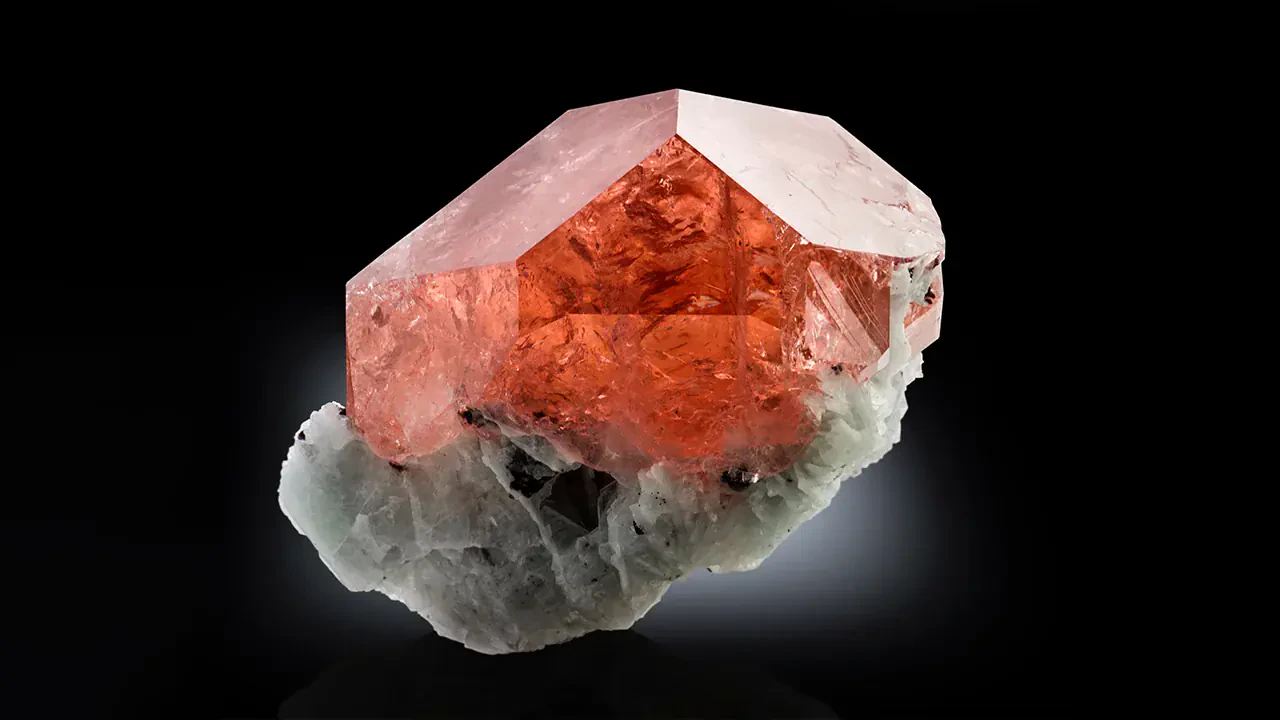
Pink to peach beryl colored by Mn²⁺ (occasionally Mn³⁺), usually from evolved pegmatites. Crystals are prismatic to tabular, often very clear, sometimes with gentle zoning. It pairs nicely with cleavelandite and quartz, and good pieces show crisp form and a calm, even hue.
4. Heliodor / Golden Beryl:
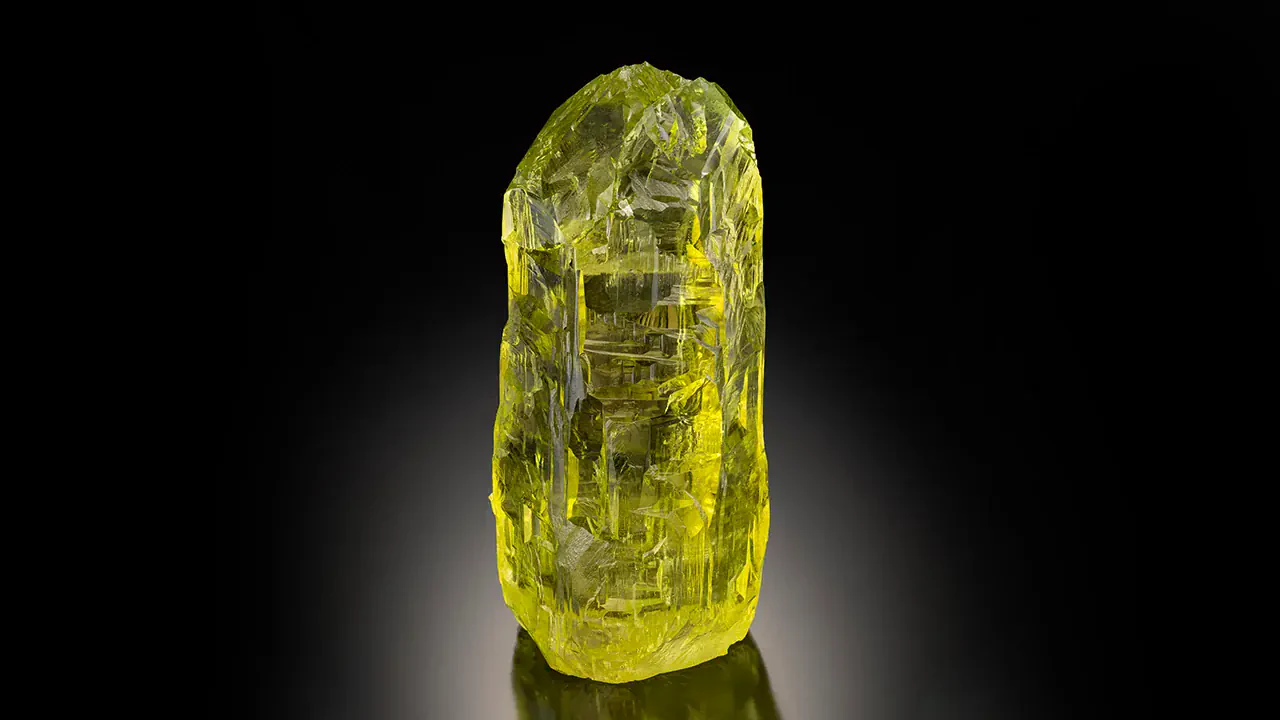
Yellow to yellow-green beryl colored by Fe³⁺, known for bright, clean prisms and simple, glassy terminations. It’s frequently overlooked until you see a sharply formed crystal on pale feldspar, where the color pops. Clarity and simplicity are the appeal.
5. Goshenite:
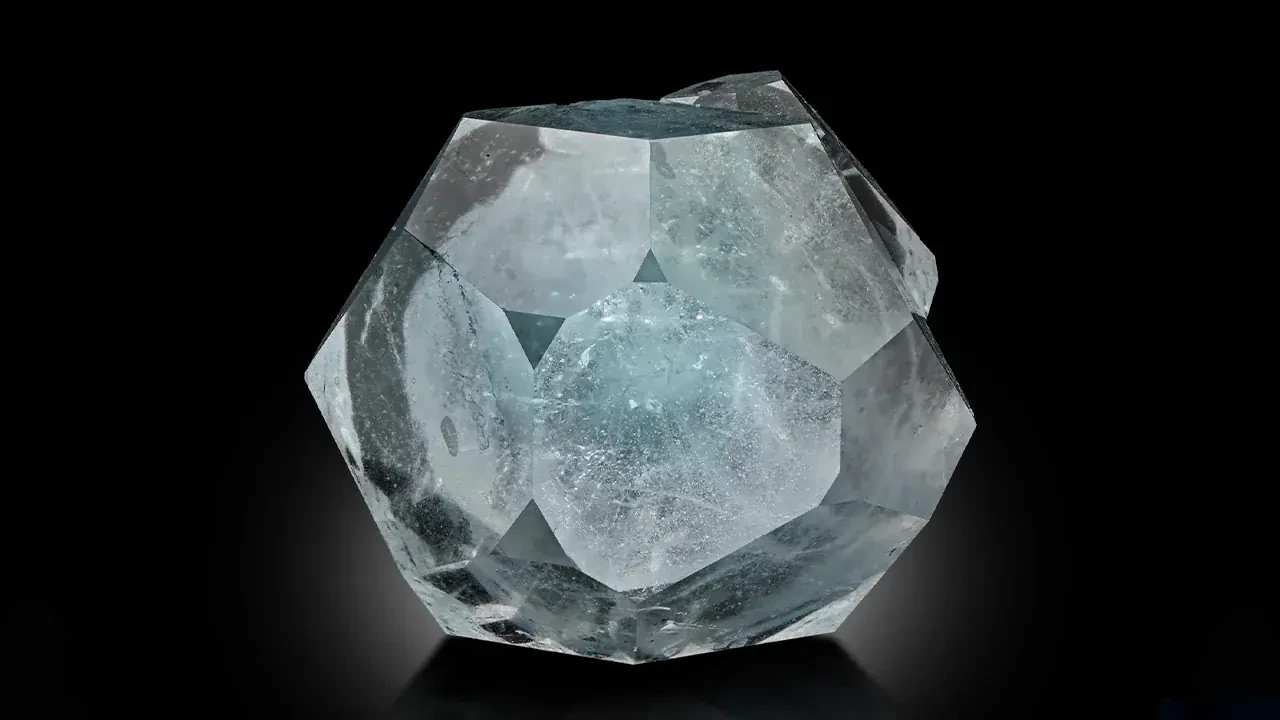
Colorless beryl—the baseline for the species when chromophore elements are absent. Collectors prize it for knife-edge terminations and water-clear interiors that show the hexagonal architecture. Historically used for lenses; in collections, it’s the control sample for the family.
6. Red Beryl (formerly “bixbite”):
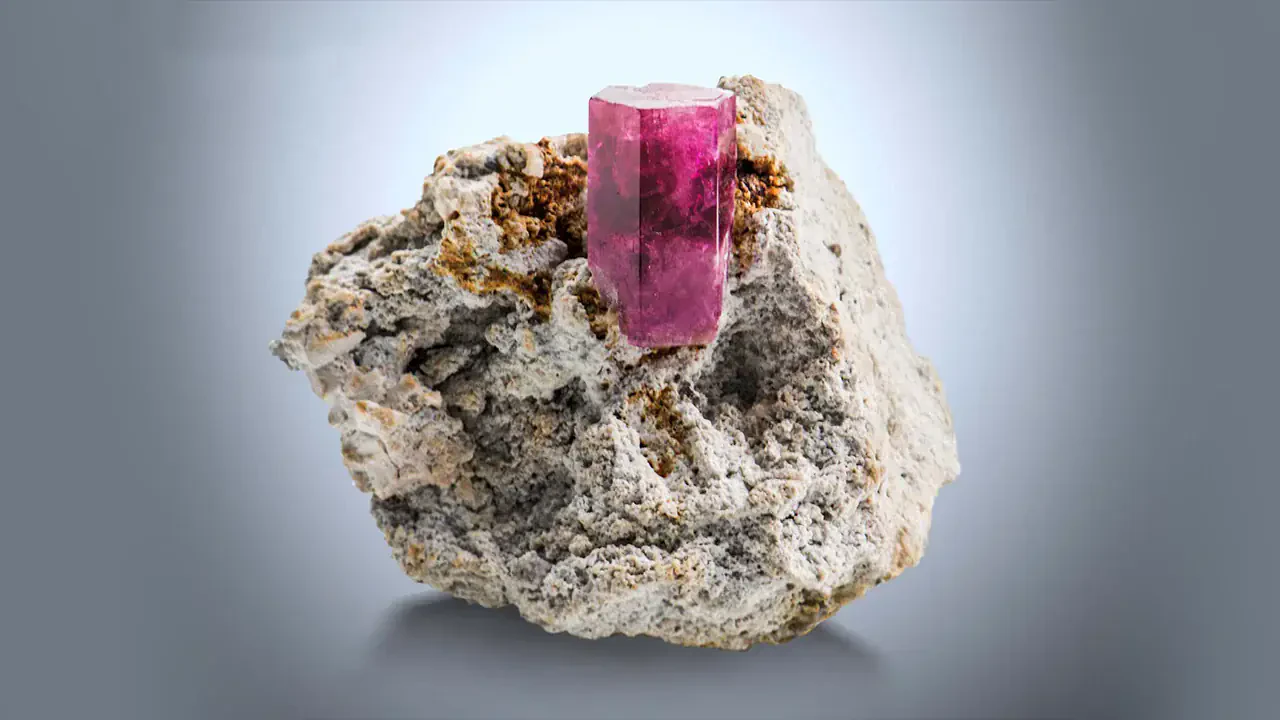
Raspberry-red beryl colored by Mn³⁺, formed in gas-rich cavities of beryllium-bearing volcanic rocks. Crystals are small but sharply defined, and true specimens are exceptionally scarce. Rarity, not size, drives value.
7. Maxixe Beryl:
Deep indigo/ink-blue beryl colored by radiation-related color centers rather than iron. The hue can fade under light, which is part of its story: striking in the tray, but not color stable. Labs can restore the color, making it a case study in color centers.
8. Vanadium Beryl:
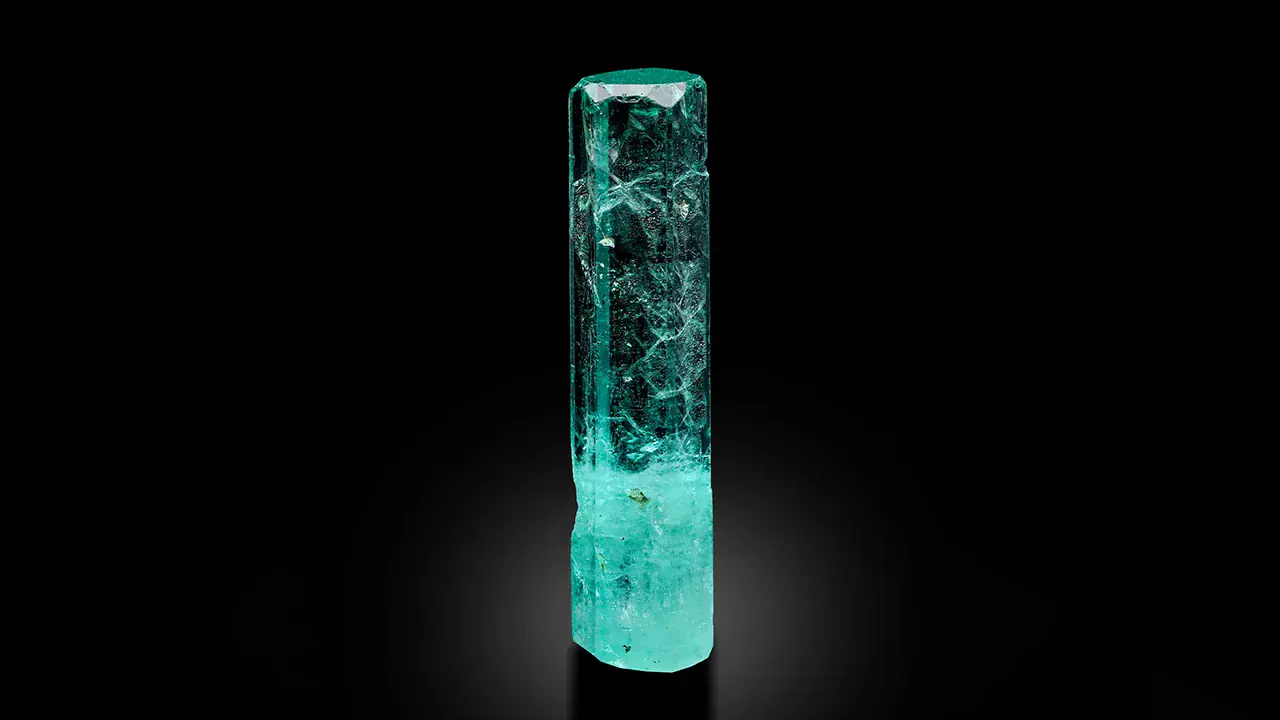
Green beryl is colored predominantly by V³⁺; if saturation crosses accepted thresholds, it’s classed as emerald. Below that line, it reads as a crisp, cool green with fewer inclusions. Chemistry and color strength decide the label.
9. Cs-bearing Beryl (Vorobyevite):
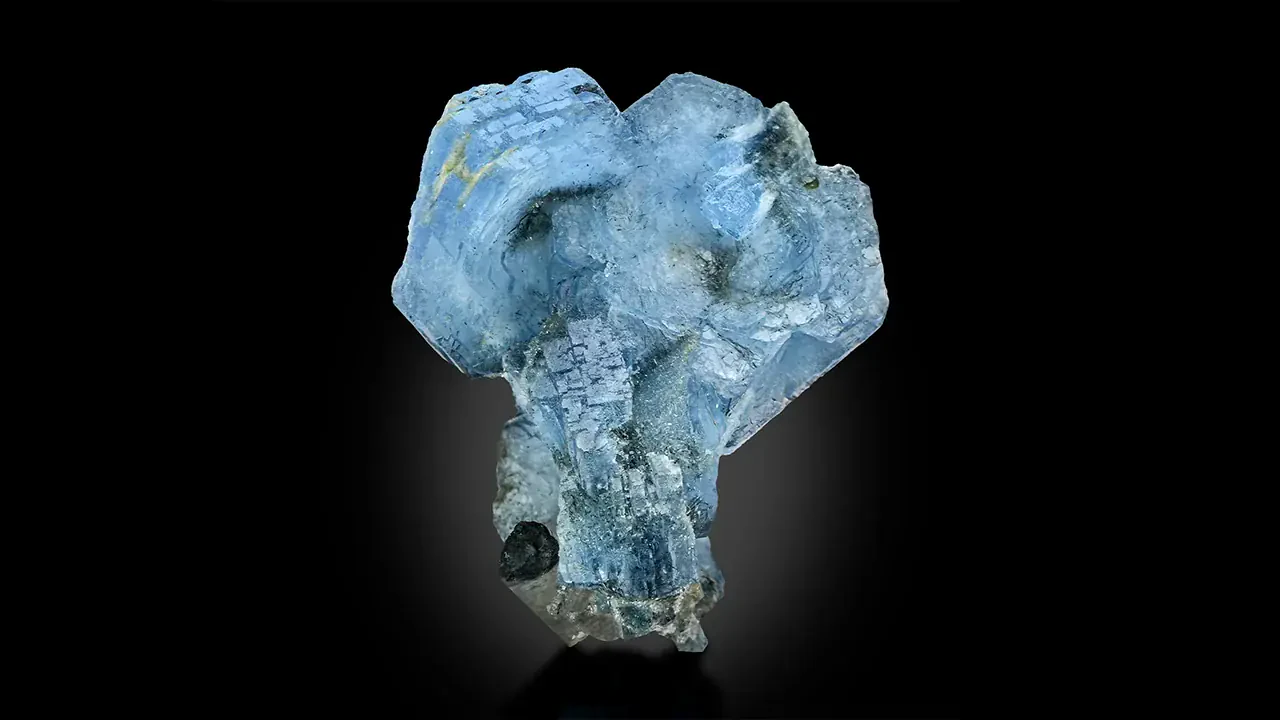
Beryl with measurable cesium substitution is usually colorless to pale. It’s a chemistry-defined variety rather than a visual showpiece, but it matters for pegmatite petrology. Sharp crystals with documented chemistry make solid reference specimens.
10. Cat’s-Eye Beryl (Chatoyant Beryl):
Beryl showing a narrow eye from aligned tubes or fibrous inclusions, most often seen in golden beryl and aquamarine. The effect is orientation-dependent: cut or oriented correctly, the eye is crisp and centered. In rough, look for parallel silk under a beam of light.
11. Trapiche Emerald:
A growth-pattern variety of emerald with a six-spoked, star-like sector zoning. The spokes are structural, not an optical trick, and reflect how the crystal grew around barriers or impurities. Highly collectible for pattern and contrast.
How Beryl’s Crystal Structure Shapes Its Many Mineral Forms?
Beryl belongs to the hexagonal system and builds itself from rings of silica that stack to form channels. Those channels are spacious enough to host small ions and molecules while the crystal grows.
The lattice stays stable while trace elements slip into specific sites. When iron, manganese, chromium, or vanadium enter the structure, they change how the crystal absorbs light. The architecture remains the same. The expression changes.
Where Beryl Forms: The Geological Environments Behind This Mineral
Most beryl grows in granitic pegmatites where slow cooling and fluid-rich conditions allow large, well-shaped crystals to develop.
It also forms in high-grade metamorphic rocks such as mica schists and gneisses, and in hydrothermal veins that cut granite. In these settings, beryl keeps familiar company.
Quartz and feldspar are common partners. In lithium-rich pockets, you often see tourmaline, spodumene, and lepidolite nearby. The associates act as signposts, pointing to the chemistry and temperature of the pocket.
How One Mineral Displays Many Colors
Color in beryl comes from trace elements and local geochemistry. Iron in the two-plus state tends to give blue, while iron in the three-plus state can nudge the tone toward green. Manganese brings pink to peach. Chromium and vanadium create vivid green.
These substitutions are small, yet they alter how the crystal handles light, so a single structure can carry a wide palette. Temperature, pressure, and the history of the fluids decide which color wins.
Geological Environments That Produce Beryl
Beryl typically grows where silica-rich fluids linger and cool slowly. The most common setting is granitic pegmatite, whose coarse grains reflect long cooling times and fluid abundance—perfect conditions for large, well-shaped crystals.
Beryl also forms in high-grade metamorphic rocks (mica schists, gneisses) and in hydrothermal veins that thread through granite and related rocks.
Each environment leaves clues in the neighbors you see quartz and feldspar are routine; tourmaline, spodumene, and lepidolite often join in lithium-rich pockets.
The Roles of Pegmatites, Hydrothermal Veins, and Metamorphic Rocks in Beryl Formation
Pegmatites act like a slow cooker: late-stage, element-rich fluids cool so gradually that beryl can grow big and sharp. Hydrothermal systems move hot fluids through fractures; when beryllium meets chromium- or vanadium-bearing host rocks, emerald can form.
Metamorphic belts matter where heat and pressure release beryllium from older minerals and rebuild it into beryl within schists and gneisses.
Factors That Make Some Beryls Common and Others Rare
It’s the chemistry meeting timing and space. Aquamarine and goshenite form widely because pegmatites and iron are common, and clean growth conditions aren’t unusual.
Emerald needs beryllium to intersect with chromium or vanadium at the right moment—an uncommon overlap.
Red beryl is rarer still, requiring a narrow volcanic setting, manganese in the right state, and a tight temperature window. Fewer suitable sites mean fewer crystals.
Factors That Make One Region’s Aquamarine Heartlands
Expansive pegmatite fields, dependable fluid chemistry, and deep, stable pockets favor long, transparent blue prisms with crisp terminations. Districts with a long mining history also benefit from cumulative knowledge—how to approach pockets safely, read wall rock signals, and preserve matrix associations that enhance specimen quality.
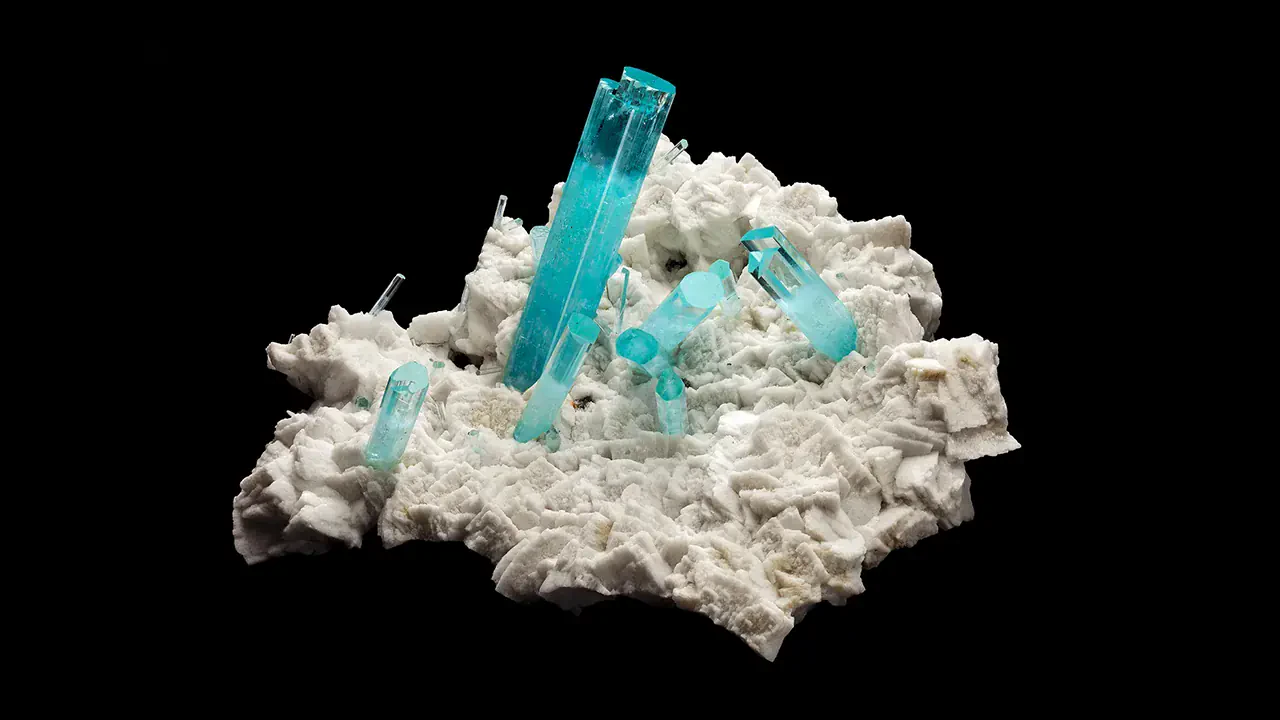
Notable Sources of Beryl Around the World
Here is a quick reference to famous regions for each beryl variety:
· Aquamarine: Minas Gerais, Brazil, for size and clarity; Gilgit Baltistan, Pakistan, and high mountain Afghanistan for razor sharp prisms on snowy albite or smoky quartz; Erongo, Namibia, plus belts in Nigeria and Madagascar for bright color and clean geometry.
· Emerald: Colombia for saturated green and classic jardin textures from hydrothermal systems; Zambia for cleaner crystals with a slightly bluish green; Panjshir and parts of Ethiopia for vivid greens with distinctive inclusions; historic Urals for pedigree and habit.
· Morganite: Madagascar for soft peach crystals on cleavelandite with strong contrast; Brazil for large transparent prisms; Afghanistan and Mozambique for bright, even color with crisp terminations.
· Heliodor or Golden Beryl: Volodarsk, Ukraine, for bright textbook prisms with glassy terminations; Erongo, Namibia, for transparent lemon to gold crystals on feldspar and quartz; Brazil and Madagascar for steady, clean prismatic pieces.
· Goshenite: New England pegmatites in the United States for water-clear reference prisms that show the architecture of beryl; Brazil and Pakistan for larger glassy crystals with knife-edge terminations.
· Red Beryl: Wah Wah Mountains, Utah, for tiny sharp hexagonal crystals grown in gas-rich rhyolite cavities with manganese, the only commercial source and the reason for extreme rarity.
· Maxixe Beryl: Minas Gerais, Brazil, and Madagascar for deep indigo produced by radiation-related color centers that are striking but light sensitive.
· Vanadium Beryl: Various hydrothermal and metamorphic belts where fluids meet vanadium-rich rocks, labeled emerald only when saturation meets accepted thresholds.
· Cs Bearing Beryl (Vorobyevite): Evolved pegmatites in Madagascar and parts of Central and Inner Asia for cesium-rich chemistry, valued for documented composition and pegmatite petrology.
· Cat’s Eye Beryl: Most often in golden beryl from Brazil and Madagascar, where parallel tubes or fibers create a narrow, centered eye when oriented correctly.
· Trapiche Emerald: Colombian belts for the most consistent six-spoke growth patterns with strong contrast, a growth texture rather than an optical effect.
Why High Mountain Districts Yield Standout Beryls
High-grade alpine pegmatites can be chemically fertile and structurally open, yet cool slowly—an ideal combination.
The result is aquamarine with icy clarity, sharp geometry, and striking matrix pairings like snowy albite or smoky quartz. Access is tough and seasons are short, but when pockets open, the aesthetics can be exceptional.
Why High Mountain Districts Yield Standout Beryls
Pegmatites enriched in manganese tend to favor morganite (pink to peach), while iron in the right oxidation state supports heliodor (yellow to yellow-green).
Regions with evolved pegmatite swarms and steady fluid flow produce both, often with attractive associations on feldspar and quartz. Clean pockets and gentle cooling help preserve bright, prismatic forms.
Unique Geological Conditions That Create Red Beryl
Red beryl typically forms in gas-rich cavities within beryllium-bearing volcanic rocks, with manganese as the key chromophore and oxidation conditions tightly constrained.
The growth window is narrow, crystals are small but sharp, and productive pockets are scarce. That geologic precision explains the extreme rarity.
Other Notable Sources of Beryl Worldwide
Across multiple belts, metamorphic terrains and pegmatite provinces produce emerald, aquamarine, heliodor, morganite, and goshenite in varying amounts.
Some districts are known for heliodor on clean feldspar, others for aquamarine with superb clarity, and still others for emerald with distinct internal textures.
Each area’s host rocks, structure, and fluid history leave a fingerprint on habit, color, and inclusions.
Key Qualities to Look for in a Beryl Specimen
Start with shape and integrity: sharp hexagonal prisms, clean terminations, and minimal damage. Color should be even (unless natural zoning is part of the appeal) and, for transparent varieties, clarity matters.
Matrix adds value when it frames the crystal well—think aquamarine on snowy feldspar or emerald nestled in contrasting host rock.
Aesthetic balance, not just size, is what holds attention in a cabinet. Reliable locality and honest documentation push good pieces into “great.”
How to Distinguish Natural Beryl from Treated Material
Treatments vary by variety. Aquamarine is often gently heated to push greenish tones toward blue; maxixe-type blue can come from irradiation and may fade in light.
Emeralds are routinely fracture-filled with oils or resins to reduce the look of cracks. In hand, look for color concentrated along fractures (a clue to artificial color centers), an overly uniform “too perfect” hue, or “flash” in filled fractures under magnification.
For certainty, tools like FTIR/Raman and UV response help, but the simplest rule is disclosure from the seller plus provenance that makes sense.
Common Misidentifications and Lookalike Minerals for Beryl
- Apatite: also hexagonal but much softer (Mohs ~5); edges wear quickly; heavier zoning; RI/SG lower.
- Topaz: different symmetry and perfect cleavage; higher SG; often shows etched or stepped terminations.
- Tourmaline: trigonal, often triangular in cross-section; heavy longitudinal striations; higher RI; different “feel.”
- Quartz: lacks beryl’s heft and hex prism proportions; different luster on prism faces; no pleochroism.
When in doubt, hardness, SG, and a simple loupe exam (striations, cleavage, inclusions) resolve most cases without invasive tests.
How to Store and Handle Beryl Safely
Stable temperature and humidity, cushioned support, and dust-free trays do most of the work. Keep sensitive colors out of prolonged sunlight—maxixe-type blue is notorious for fading. Avoid ultrasonic cleaners and harsh chemicals; a soft brush with distilled water is usually enough.
Handle fracture-rich emeralds gently; store upright if possible so weight isn’t carried on thin edges. For trimming matrix, work wet, outdoors or under extraction, and wear a particulate mask—beryllium dust is the hazard, not intact crystals.
How Market Demand Shapes Beryl Value
Demand follows color, form, and story. Vivid, even color with sharp terminations commands attention; elegant matrix associations can lift a modest crystal above a larger but isolated one.
Locality prestige matters when it’s tied to a recognizable “look.” Extreme rarity drives red beryl; historic hydrothermal textures drive fine emerald; size and clarity lift aquamarine.
Finally, documented provenance and condition (no repairs, honest cleaning) stabilize value over time.
Why Beryl Remains a Collector’s Favorite
Range and readability. Few species offer such a spectrum of color within one architecture, and few tell their geological story as clearly—pegmatite associations, hydrothermal textures, metamorphic overprints. From accessible aquamarine to elusive red beryl, there’s always another rung to climb without leaving the species.
Frequently Asked Questions About Beryl
Is beryl always considered a gemstone?
No. Beryl is a mineral species. Many varieties are gemmy, but collectors also prize opaque, etched, or matrix-bound crystals for structure, habit, and associations rather than cut potential.
Can different beryl varieties occur in the same area?
Yes. Pegmatite fields commonly yield aquamarine, morganite, heliodor, and goshenite within the same district. Emerald needs chromium/vanadium-bearing hosts, so it often forms in a different but sometimes nearby setting.
What’s the rarest type of beryl?
Red beryl. It forms under a narrow volcanic recipe, crystals are small, pockets are scarce, and production is limited. Supply—not just beauty—drives its extreme rarity.
How can you tell if a specimen is treated or natural?
Magnification first: look for filled fractures, color concentrated along cracks, or an overly uniform hue. Ask for disclosure and test results; labs can confirm with FTIR/Raman/UV. For aquamarine, gentle heat is common; for emerald, assume some level of fracture filling unless stated and supported.
Why does red beryl often cost more than emerald?
Simple scarcity. Fine emerald is valuable, but there are far more emerald deposits and larger crystals. Red beryl’s geologic window is narrow, production is tiny, and demand from both collectors and gem buyers compresses a very small supply.
What’s the best way to store beryl crystals safely?
Cushioned bases or saddles, stable temperature and humidity, and low light for sensitive colors. Keep fracture-rich pieces upright and avoid pressure on tips. Clean with distilled water and a soft brush; dry thoroughly before boxing.
Can beryl be radioactive or dangerous to handle?
Intact beryl is not radioactive and is safe to handle. The risk is from dust when cutting or trimming—beryllium compounds are hazardous if inhaled. Work wet, wear a proper mask, and use extraction. Also, be mindful of associated minerals in pegmatites that may carry trace radioelements, and store those appropriately.
Conclusion
Beryl is one structure with many voices. The same hexagonal framework takes on blue, pink, yellow, green, or clear when trace elements slip into place. Pegmatites give crystals room to grow, while hydrothermal and metamorphic settings supply the chemistry that sets color and habit. You can read that story in the six-sided prism, the vitreous luster, the vertical striations, the Mohs 7.5 to 8 hardness, and the gentle pleochroism in colored types. Collectors prize balance more than size: vivid, stable color, crisp form, convincing locality, and clean preparation.
Ready to add beryl to your cabinet
If you want to shop for beryl varieties, visit our Fine Art Minerals shop. Explore aquamarine, morganite, heliodor, emerald, and the occasional red beryl with clear photos and full locality details.
Share

